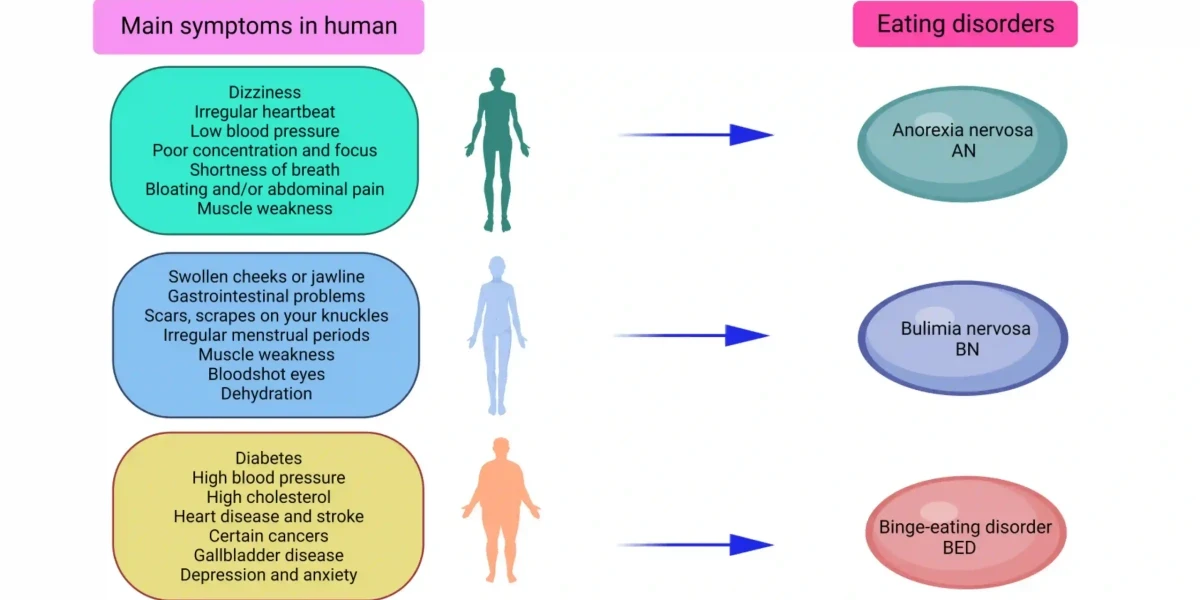Introduction
In the evolving landscape of fitness and health, women are shattering stereotypes and redefining strength. The image of a strong woman no longer aligns solely with lean figures or endurance athletes. Instead, a new movement is emerging where building muscle is not just a physical pursuit, but an empowering journey toward greater self-confidence, health, and societal change. Embracing muscularity and strength doesn't detract from femininity; it amplifies it, showcasing resilience, dedication, and the ability to break free from traditional expectations.
For many women, building muscle represents more than a workout routine—it's a bold statement of self-empowerment. It's a rebellion against the historical notion that strength is a masculine trait. Women who lift weights or engage in muscle-building activities often find a new sense of self-worth and confidence, derived from tangible progress and improved physical capabilities. Muscular strength in women symbolizes independence and the refusal to adhere to outdated gender norms, sending a powerful message that strength and femininity coexist harmoniously.
One of the most persistent myths in female fitness is the fear of "bulking up." Many women hesitate to pursue strength training due to concerns about developing overly large muscles. However, the reality is that female physiology, particularly hormonal differences, makes it challenging to achieve extreme muscle growth without specific training regimens and nutritional strategies. Educating women about these physiological facts dispels the myth and encourages more to embrace strength training as a means to enhance their health and appearance without fear of losing their femininity.
The benefits of muscle growth extend far beyond aesthetic appeal. Women who engage in strength training experience significant health improvements, including better bone density, reduced risk of chronic diseases, and improved metabolic function. Additionally, the psychological benefits are profound. Enhanced muscle tone and strength contribute to higher self-esteem and mental resilience, empowering women to face challenges with newfound confidence. From improved athletic performance to daily functional strength, the advantages are multifaceted and deeply enriching.
The Science of Muscle Growth for Women

- Understanding Female Physiology
Muscle growth in women is influenced by similar biological mechanisms as in men, though there are key differences. Women generally have lower levels of testosterone, a hormone that significantly impacts muscle growth. However, women's muscles can still grow efficiently with the right combination of strength training and nutrition. The primary differences lie in muscle mass potential and distribution patterns, but the foundational principles of muscle hypertrophy remain consistent across genders.
Hormones play a crucial role in how muscle is built. Testosterone, present in both men and women but at higher levels in men, is a key driver of muscle protein synthesis. Estrogen, which is more prevalent in women, has beneficial effects on muscle recovery and collagen synthesis, supporting joint health and overall strength. Understanding these hormonal influences helps tailor training and nutritional approaches to optimize muscle gain for women.
- Genetic Potential and Body Composition
Genetics play a significant role in muscle development, affecting factors such as muscle fiber composition, fat distribution, and overall body type. While some women may find it easier to build muscle due to favorable genetic factors, others can still achieve significant muscle growth with consistent effort and the right strategies. Personalized approaches to training and nutrition are essential to maximize each individual's genetic potential.
Why Muscle Growth Matters for Women
- Building Functional Strength: Benefits for Daily Activities and Physical Resilience
Muscle growth is fundamental for women, not just in the gym but in everyday life. Functional strength—gained through strength training—enhances one's ability to perform daily activities with ease, from carrying groceries to lifting children. This type of strength training targets the muscles used in real-life activities, improving overall physical resilience and reducing the risk of injury. The empowerment that comes with being physically capable in daily tasks is immeasurable, fostering both independence and confidence. Women who prioritize muscle growth find themselves more agile, better balanced, and less prone to the aches and pains that often accompany a sedentary lifestyle.
- Improving Metabolic Health: Muscle’s Impact on Metabolism and Fat Loss
Building muscle is not just about aesthetics; it has profound implications for metabolic health. Muscle tissue is metabolically active, which means it expends calories even when at rest. For women, increasing muscle mass can significantly boost metabolism, making it easier to maintain a healthy weight and lose fat. This is particularly beneficial for those who struggle with metabolic conditions or want to improve their overall body composition. Moreover, strength training can improve insulin sensitivity, which helps in regulating blood sugar levels and reducing the risk of type 2 diabetes. The metabolic boost from muscle growth is a powerful tool in the fight against obesity and metabolic disorders.
- Bone Density and Long-Term Health: Reducing Osteoporosis Risk Through Strength Training
One of the critical health benefits of muscle growth for women is its impact on bone density. As women age, they are at a higher risk of developing osteoporosis—a condition characterized by weakened bones. Strength training stimulates bone growth and increases bone density, significantly reducing the risk of fractures and osteoporosis. By incorporating weight-bearing exercises into their fitness routine, women can protect their bones and ensure long-term skeletal health. This proactive approach not only supports a more active and independent lifestyle in later years but also enhances overall well-being.
Common Misconceptions about Women and Muscle

- "Bulking Up" Myth: Why Muscle Gain for Women Doesn’t Mean Becoming Overly Muscular
The fear of "bulking up" is one of the most prevalent myths deterring women from strength training. However, it’s important to understand that due to lower levels of testosterone, women are less likely to develop large, bulky muscles without a highly specific training regime and dietary plan. Most women who engage in strength training will find their muscles becoming more toned and defined rather than excessively large. Dispelling this myth is crucial to encouraging more women to embrace strength training without fear of losing their femininity or altering their desired physique.
- Strength Training and Femininity: Redefining What It Means to Look "Feminine"
Strength training can, in fact, enhance femininity by promoting a balanced, healthy physique. Redefining what it means to look "feminine" includes recognizing that strength and muscle definition are not antithetical to femininity. In contemporary fitness culture, strong is beautiful. Women who lift weights not only enjoy the physical benefits but also embody a powerful self-confidence that radiates beauty and grace. Challenging outdated notions of femininity, these women show that strength is an integral part of being a well-rounded, healthy, and empowered individual.
- Lifting Heavy Weights: Addressing the Myth That Heavy Weights Lead to Excessive Muscle
Another misconception is that lifting heavy weights will make women excessively muscular. In reality, lifting heavier weights is necessary for building strength and muscle, but it does not lead to an overly muscular physique unless combined with specific and often extreme dietary and training practices. Heavy lifting is effective in building lean muscle mass, which contributes to a toned and athletic appearance. Embracing heavy weights can help women achieve their fitness goals more efficiently, enhancing muscle strength and endurance without compromising their aesthetic preferences.
Getting Started with Strength Training
- Finding Your Strength Goals: Defining Personal Objectives for Fitness
Embarking on a strength training journey starts with understanding your personal fitness goals. Whether you aim to enhance athletic performance, improve health metrics, or sculpt a toned physique, clarity on these objectives is crucial. By setting clear, achievable goals, you create a roadmap that guides your training efforts. This process involves introspection and a realistic assessment of your current fitness level. Your goals will shape your workout routine, influence your dietary choices, and keep you motivated. Remember, fitness is highly individual, and your goals should reflect what’s most meaningful to you—be it lifting heavier weights, feeling more energetic, or simply staying active as you age.
- Choosing the Right Workout Style: Weightlifting, Bodyweight, and Functional Training
Once you’ve defined your goals, the next step is to select the workout style that best aligns with them. Weightlifting is ideal for those looking to build significant muscle mass and increase strength. It involves exercises like squats, deadlifts, and bench presses that target multiple muscle groups. Bodyweight training, on the other hand, utilizes your own weight for resistance and is excellent for improving overall strength and endurance without the need for equipment. Functional training focuses on exercises that mimic real-life movements, enhancing balance, coordination, and strength. It’s essential to choose a workout style that not only meets your fitness goals but also fits your lifestyle and preferences, ensuring consistency and enjoyment in your routine.
- Structuring a Beginner Program: Key Exercises and Routines for Muscle Growth
As a beginner, structuring a strength training program can feel overwhelming. Start with essential exercises that work the major muscle groups. Incorporate movements like squats, lunges, push-ups, and rows. These compound exercises engage multiple muscles, making your workouts more efficient. Begin with lighter weights or bodyweight to master proper form, then gradually increase the resistance. Aim for a balanced routine that works all major muscle groups over the course of a week. Consistency is key—stick to a regular schedule, allowing time for recovery and progression. Remember, the foundation of any effective strength training program is gradual progression and dedication to steady improvement.
Essential Components for Muscle Growth
- Progressive Overload Explained: How to Safely Increase Intensity
Progressive overload is the cornerstone of muscle growth. It involves gradually increasing the stress placed on muscles during training to stimulate adaptation and growth. This can be achieved by adding more weight, increasing the number of repetitions or sets, or reducing rest intervals. The key is to challenge your muscles consistently while allowing sufficient recovery time. Progressive overload ensures that your muscles are continuously adapting and growing stronger. It’s essential to progress slowly and steadily to avoid injury and ensure long-term success in your strength training journey.
- Understanding Reps and Sets: Ideal Ranges for Building Muscle
When it comes to building muscle, understanding the ideal ranges for repetitions (reps) and sets is vital. For hypertrophy (muscle growth), aim for 8-12 reps per set, performing 3-4 sets of each exercise. This range effectively stimulates muscle fibers, promoting growth while also improving endurance. If your goal is strength, you might focus on fewer reps (1-6) with higher weights, whereas for muscular endurance, higher reps (15+) with lighter weights are beneficial. Balancing these elements based on your specific goals will optimize your training outcomes and ensure that you’re working your muscles effectively.
- Incorporating Rest Days: Balancing Effort and Recovery
Rest days are a critical component of any muscle growth program. They allow your muscles to repair, recover, and grow stronger. Overexerting without adequate rest can cause injuries and stall progress. Plan for at least one or two rest days per week, considering the intensity of your workouts. Active recovery, such as light stretching or gentle yoga, can be beneficial on these days. Listening to your body and ensuring adequate rest is as important as the training itself, creating a balanced approach that fosters continuous improvement and long-term success.
Nutrition Essentials for Muscle Building
- Caloric Needs and Muscle Gain: Eating Enough for Growth
Building muscle requires more than just lifting weights; it demands a caloric surplus, meaning you need to consume more calories than you burn. This surplus fuels the process of muscle recovery and development. For women aiming to build muscle, it's crucial to calculate their total daily energy expenditure (TDEE) and then add around 250-500 extra calories to support muscle gain. This balance ensures that the body has enough fuel for intense workouts and muscle synthesis without gaining excessive fat. Monitoring caloric intake and adjusting it based on progress can make the muscle-building journey more efficient and effective.
- Protein Power: How Much Protein to Consume and Best Sources
Protein is essential for muscle building, supplying the amino acids needed for muscle repair and growth. Women should aim to consume approximately 1.6-2.2 grams of protein per kilogram of body weight daily to maximize muscle gains. Top-tier protein options include lean meats, fish, eggs, dairy products, along with plant-based foods like beans, lentils, and tofu. Incorporating a variety of these sources can help meet protein needs while also providing other essential nutrients. Additionally, consuming protein-rich meals throughout the day, especially post-workout, can optimize muscle protein synthesis.
- Importance of Carbs and Fats: Balancing Macronutrients for Energy and Recovery
While protein gets a lot of attention, carbohydrates and fats are equally important in a muscle-building diet. Carbs are the body's primary energy source, fueling workouts and aiding recovery by replenishing glycogen stores. Women should focus on complex carbohydrates like whole grains, fruits, and vegetables to provide sustained energy. Fats, particularly healthy fats from sources like avocados, nuts, seeds, and olive oil, are essential for hormone production and overall health. A balanced diet that includes a proper ratio of macronutrients (carbs, proteins, and fats) supports muscle growth and enhances recovery.
- Supplements for Female Athletes: Protein Powder, Creatine, and When They Can Help
Supplements can be a helpful addition to a well-rounded diet, particularly for female athletes with specific nutritional needs. Protein powder, for instance, is a convenient way to increase protein intake, especially post-workout when quick absorption is beneficial. Whey protein is popular due to its high biological value, but plant-based options like pea or soy protein are also effective. Creatine, a supplement known for enhancing strength and power, can be beneficial for women engaged in intense strength training. It supports muscle energy and can lead to improved performance and muscle gains. However, it's important to use supplements to complement, not replace, a balanced diet.
Tracking and Celebrating Progress
- Using Measurements, Photos, and Strength Gains: Effective Ways to Track Muscle Growth
Tracking progress in muscle building involves more than just looking at the scale. Measurements and progress photos provide a clearer picture of changes in muscle size and body composition. Regularly measuring areas like the biceps, waist, hips, and thighs can show muscle growth that might not be evident through weight alone. Progress photos taken consistently under the same conditions can visually document changes. Additionally, tracking strength gains—such as increased weight lifted or improved endurance—provides tangible evidence of progress, motivating continued effort.
- Focusing on Personal Bests: Shifting Focus from the Scale to Strength Gains
Shifting the focus from scale weight to personal bests in the gym can be incredibly empowering. Celebrating improvements in strength, such as lifting heavier weights or performing more reps, highlights the functional benefits of muscle growth. This shift encourages a healthier relationship with fitness, emphasizing capability and progress over arbitrary numbers. Personal bests reflect true advancement in physical fitness and serve as a reminder of the hard work and dedication invested in the journey.
- Building Confidence Through Milestones: Celebrating Progress on the Journey
Recognizing and celebrating milestones is crucial for maintaining motivation and confidence. Each achievement, whether it's a new personal best, reaching a body measurement goal, or simply feeling stronger, deserves acknowledgment. Celebrating these milestones reinforces the positive changes and keeps the journey enjoyable. It's important to remember that progress is not always linear, and setbacks are part of the process. By focusing on milestones and the overall journey, women can build lasting confidence and a sustainable approach to fitness.
Breaking Social Norms and Stereotypes
- Normalizing Women with Muscle: Embracing Diverse Body Types in Fitness
The fitness industry is evolving to celebrate diverse body types, yet muscular women often face unwarranted scrutiny. Breaking this stereotype begins with normalizing muscle on women, showcasing strength as both beautiful and functional. Muscularity doesn't detract from femininity; it enhances it, embodying resilience and dedication. By embracing and promoting diverse physiques, the fitness community can foster a more inclusive environment where all body types are celebrated for their unique strengths and capabilities. This shift in perception encourages more women to pursue their fitness goals without fear of judgment, leading to a healthier and more confident society.
- Empowering Other Women: Building a Community of Support
Empowerment thrives in supportive communities. Women who embrace strength training and muscle building often find themselves at the forefront of creating such communities. By sharing their journeys, offering encouragement, and celebrating each other's achievements, these women build a network of support that inspires others to join the movement. This sense of camaraderie and mutual support breaks down barriers, making the pursuit of fitness goals a collective endeavor rather than an individual challenge. A strong community not only enhances individual motivation but also fosters a culture of empowerment and resilience that can have far-reaching effects.
- Female Role Models in Strength: Celebrating Athletes and Influencers Challenging Norms
Role models play a critical role in breaking social norms. Female athletes and fitness influencers who openly celebrate their strength and muscularity challenge traditional notions of femininity. These women, whether they're Olympic weightlifters, bodybuilders, or everyday gym enthusiasts, provide tangible examples of what it means to embrace muscle and strength. Celebrating their achievements and highlighting their stories help shift societal perceptions, making it easier for more women to see the value in strength training. These role models demonstrate that strength and femininity are not mutually exclusive but are, in fact, powerful allies.
Conclusion
Building muscle is about more than just physical appearance; it's a holistic journey that encompasses health, confidence, and resilience. Strength training improves physical health by enhancing metabolism, increasing bone density, and reducing the risk of chronic diseases. It also boosts mental health, fostering a sense of accomplishment and self-worth. Embracing this journey is about recognizing the profound benefits that come with strength, both inside and out, and committing to a lifestyle that prioritizes well-being.
Investing in muscle building is an investment in long-term health and vitality. The benefits of strength training extend well beyond the gym, contributing to better mobility, reduced injury risk, and enhanced quality of life as we age. By building muscle, women can ensure they maintain their independence and physical capabilities throughout their lives. This long-term approach to fitness underscores the importance of consistent effort and dedication, highlighting muscle building as a sustainable and rewarding endeavor.
The ripple effects of one woman embracing strength can inspire countless others. By challenging stereotypes and breaking down barriers, women who build muscle pave the way for future generations to do the same. This empowerment is not just personal but communal, creating a legacy of strength, resilience, and confidence that transcends individual achievements. Inspiring others to join the journey of muscle building fosters a culture where strength is celebrated, and every woman is encouraged to unleash her full potential.
FAQs
- How Long Does It Take for Women to See Muscle Gains?
Muscle gains can vary, but most women will start to see noticeable changes within 8-12 weeks of consistent strength training, combined with proper nutrition and rest.
- Will Weightlifting Make Me Look Too Muscular?
Due to lower testosterone levels, it's unlikely for women to become overly muscular without specific training and nutrition protocols. Most women will see toned and defined muscles.
- What Are the Best Foods for Building Muscle?
Lean proteins (chicken, fish, tofu), complex carbs (whole grains, fruits), and healthy fats (avocado, nuts) are essential for muscle building. A balanced diet supports muscle growth and recovery.
- How Often Should Women Strength Train for Muscle Growth?
For optimal muscle growth, women should aim to strength train 3-4 times per week, allowing for adequate rest and recovery between sessions.
- Is It Possible to Gain Muscle and Lose Fat at the Same Time?
Yes, it’s possible with a well-structured program that combines strength training with a slight caloric deficit and high protein intake.
- Can Women Train Like Men?
Absolutely. Women can follow similar training principles as men, adjusting intensity and volume based on individual goals and fitness levels.
- Are Supplements Necessary for Muscle Gain in Women?
Supplements can be helpful but are not necessary. A well-balanced diet rich in protein, carbs, and fats is usually sufficient. Supplements like protein powder and creatine can enhance results when used appropriately.
*Image credits- freepik*
Important Notice:
The information provided on “health life ai” is intended for informational purposes only. While we have made efforts to ensure the accuracy and authenticity of the information presented, we cannot guarantee its absolute correctness or completeness. Before applying any of the strategies or tips, please consult a professional medical adviser.












